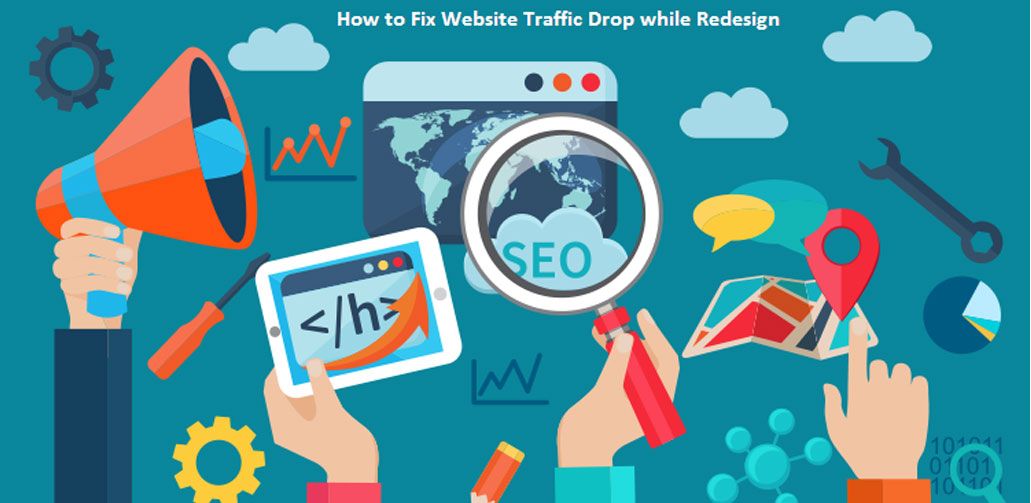
Given the pace at which web design changes, you might find that you need to get your website redesigned sooner than expected. After all, your website is a crucial business tool and will need to keep up with changing Internet algorithms and shifts in user behaviour.
Redesigning a website comes with its own set of concerns. Does website redesign affect SEO? Will there be a drop in traffic after a website redesign? How can it affect the website’s ranking? If you are a website owner, then it’s likely that these are the common questions that are on your mind.
The good news is that there are hacks to prevent a traffic drop after website redesign. Here are three most common ones:
Include SEO in the redesign process

You will need to make sure that your design and development team works closely in coordination with the SEO team. Or better still, work with an agency that can provide all these services under one roof. The reason for this is simple: an SEO expert will be able to guide the design and devel-opment team on changes required in the new site to prevent crawl issues and also to improve traf-fic, rather than lose it.
Crawl your current site to plan better

First take an inventory of all the pages on your existing website before planning any changes. This useful information will help you plan the new site architecture. It can help you ensure that you don’t lose any information from the current site and help you decide what to add to the revamped site. For example, you might be able to retain your URLS and the general structure of the site. However, if the current URLs aren’t set up logically, then a redesign is a good opportunity to change things around.
Set up 301 redirects

The lack of proper redirects is one of the most common reasons for a sudden drop in website traf-fic. If the URLs have changed, then you need to ensure that each one is set up as a 301 (perma-nent) redirect. This tells search engine crawlers that the page has permanently moved. A common error is to use 302 (temporary) redirects, but this can weaken your site ranking. The 301 redirect should ideally be done just before the new website is launched.
These three hacks are just a few of the many that can be implemented to prevent a sudden mas-sive traffic drop after a website redesign. As most businesses will testify, the results of a revamp far outweigh the concerns of keeping an outdated website..
Want us to help redesign your website? Get in touch with us.
Some Useful Links:
#socialmediaservices #thoughtleadershipcontent #uxdesigningservices #websitedevelopmentservices #digitalmagazines #publications #casestudies #TICMumbai #abouttic #TICblogs #TICpodcasts #ourwork #ourclients #testimonials #contactus #careers #portfolio





